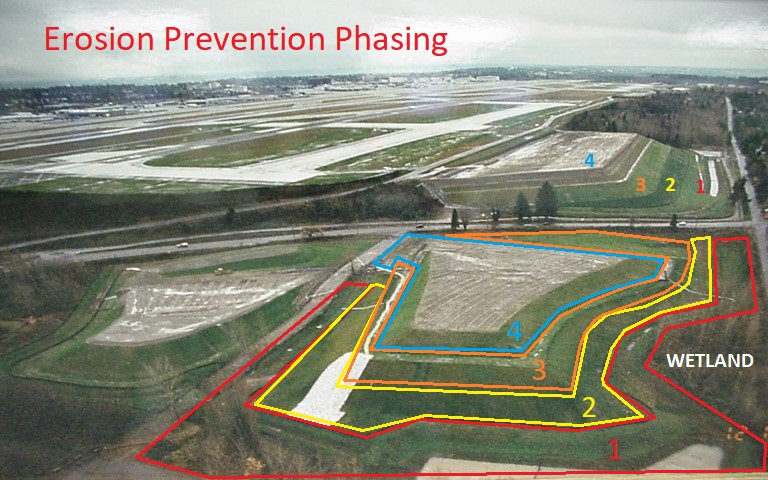
Phasing a Stockpile Project
Phase 1-
(A) Install silt fences on perimeter and at base of future stockpile.
(B) Clear, grub, grade, construct drainage ditches and temporary stormwater pond including outlet structure and perforated pipe level spreader drains. Grade to drain water away from outer perimeter silt fence and toward ditch.
(C) Hydroseed and install blankets in ditch line.
(D) NOTE: Background stockpile, built later, used an early generation construction stormwater treatment system and discharged to creek instead of level spreaders into vegetation.
Phase 2-
(A) Place and compact fill material to approximately 20 feet of vertical elevation.
(B) Trackwalk and hydroseed slope.
Phase 3-
(A) Same as Phase 2.
(B) Same as Phase 2.
Phase 4-
(A) Place and compact fill material to approximately 20 feet of vertical elevation. Start base of slope 15 feet in from lower fill and grade to drain away from lower slope and to the stormwater pond.
(B) Trackwalk and hydroseed slope.
(C) No hydroseed on top of the pile as material is continually brought in as available.